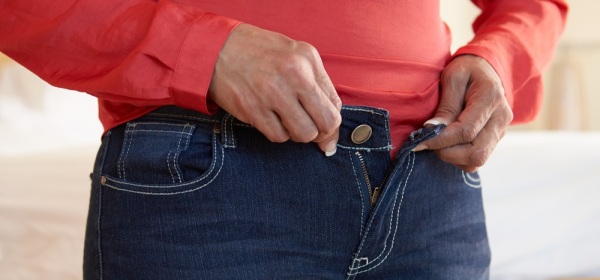For many women, the menopause years are often met with physical, emotional and mental changes. And often, just as you are navigating the tricky symptoms of hot flushes, night sweats or increased anxiety levels, you are greeted by another unwelcome visitor: weight gain.
We know that weight is a complex area of health, influenced by many factors. Diet and physical activity can play their part, but when it comes to midlife weight gain, there are some other pieces of the puzzle that need to be taken into account.
So what are the facts behind midlife weight gain, when and why do you need to pay attention to it, and what can you do to minimise or manage it?
What’s really behind midlife weight gain?
For decades, research has debated the causes of midlife weight gain. At a time when there are so many things changing in a woman’s life, it’s hard to pinpoint the exact reason.
Is it all down to menopause and changing hormones? Or is it simply a matter of getting older? The International Menopause Society looked to the research to answer this age-old question.
Here’s what they found: midlife weight gain of about 0.5kg per year is due to age rather than menopause or changing hormones. In other words, whether a woman in midlife is going through menopause or not, a half-kilo gain per year is simply a consequence of getting older.
But there’s more…
The research also found that the hormonal changes of menopause often affect where this extra fat is stored. Studies show that the reduction of the hormone oestrogen that occurs during menopause favours fat storage in the abdominal region – that is, the waist, rather than the thighs and hips.
Many women notice an increase in waist size or a change in body shape in their midlife years, from more ‘pear-shaped’ to more ‘apple-shaped’. But what is really important here is that too much weight around your abdomen can have serious follow-on effects to your overall health.
Why you need to be aware
The fat stored in the abdominal region is also known as ‘visceral fat’. Compared to the other types of fat (subcutaneous fat), you cannot pinch visceral fat with your fingers or grab it with your hand. Visceral fat lies out of reach, deeper in your body, wrapping around vital organs such as your liver, gut and pancreas.
Visceral fat is favoured in midlife weight gain and, unfortunately, it’s a key player in a variety of health issues. An excess of visceral fat is linked to an increased risk of heart disease (the number one killer of women in Australia), type 2 diabetes, breast cancer and dementia.
What you can do about it
Get active, stay active. The more you move, the more you can lower your overall weight and waist circumference (the measurement around your waist).
Even though physical activity may not entirely prevent weight gain with age, it can protect against the development of obesity and abdominal obesity. What’s more, physical activity supports healthy bones, another key health issue for women in midlife.
Studies show that 60 minutes a day of moderate intensity activity are key to maintaining a healthy weight. If this sounds like too much for you, start small and work your way up. The important thing is to start.
What you eat matters. Diet is always a key part of being healthy, but in midlife it can be especially important in keeping the extra belly weight at bay. Choose a healthy way of eating that works for you and your lifestyle, and make sure it’s one you can maintain.
You can find out more about healthy eating and good nutrition by visiting the Jean Hailes Healthy living pages, or read more about menopause and how to best manage your midlife years.
Published with the permission of Jean Hailes for Women’s Health
Related articles:
How to fight middle-aged spread
Eat to improve your memory
Do you need a health check?

